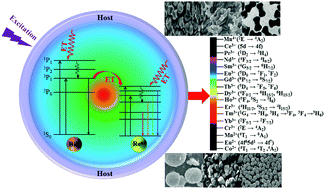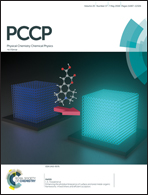Spectral and energy transfer in Bi3+–Ren+ (n = 2, 3, 4) co-doped phosphors: extended optical applications
Abstract
Bismuth with [Xe]4f145d106s26p3 electronic configuration is considered as ‘a wonder metal’ due to its diverse oxidation states and multi-type electronic structures. This review article summarizes the spectral properties of phosphors doped with Bi3+ or co-doped with Bi3+–Ren+ (n = 2, 3, 4), and highlights the critical role of Bi3+ in spectral modification. The energy transfer processes are discussed in detail, including (1) Bi3+ and metal-to-metal charge, (2) Bi3+ and tetravalent cation, (3) Bi3+ and trivalent cation, (4) Bi3+ and divalent cation, and (5) Bi3+ and two kinds of rare earth ions. The most important results obtained in each case are summarized, and the emerging challenges and future development of Bi3+-doped phosphors are discussed. We introduce a method for spectral modification based on the energy transfer between Bi3+ and other cations, with the perspective of development and application in the fields of phosphors, telecommunication, optical temperature sensing, biomedicine, and lasers.

- This article is part of the themed collection: PCCP Perspectives


 Please wait while we load your content...
Please wait while we load your content...